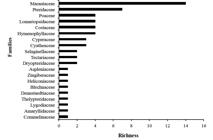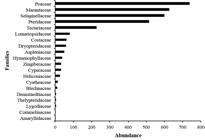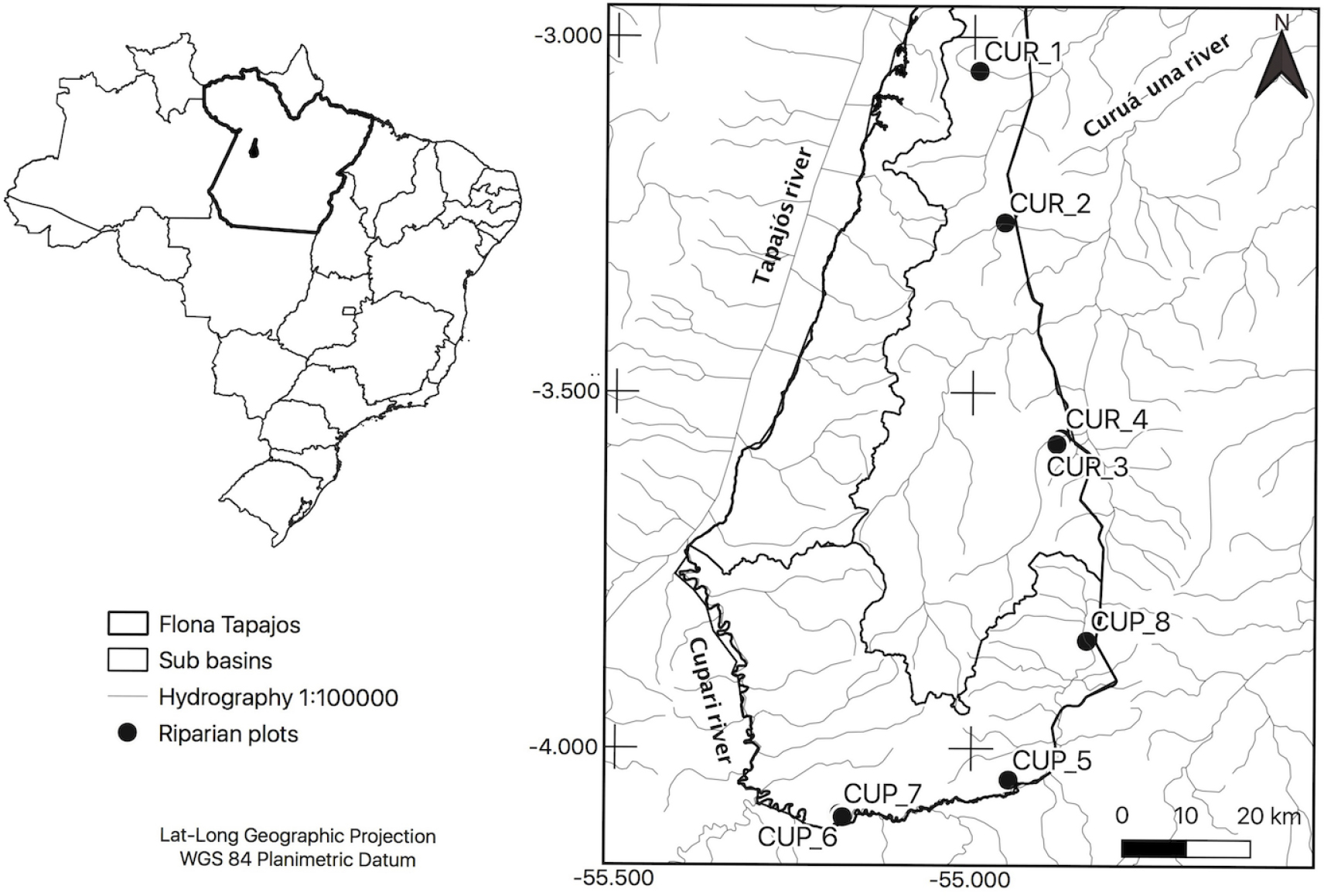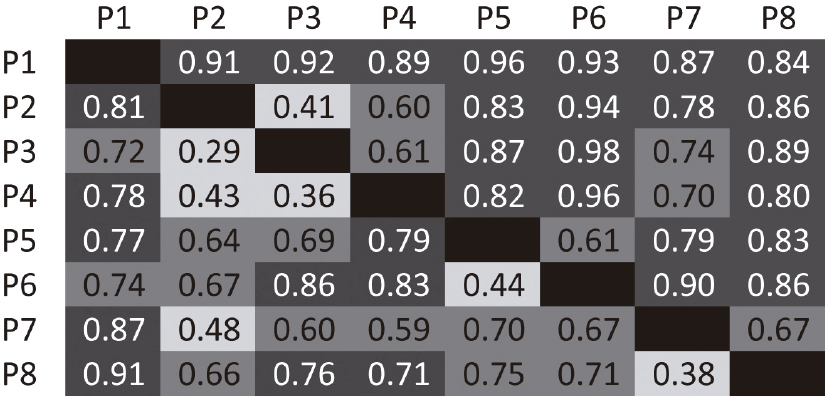Abstract
We conducted an inventory of the fern, lycophyte and non-palm monocotyledon ground-herbs of terra firme riparian forests in the lower Tapajós region of the Brazilian Amazon. Eight 1.5 × 250 m plots, totaling 0.3 hectares, were surveyed along the watersheds of the Cupari and Curuá-Una rivers, located at the Tapajós National Forest, Pará, Brazil. To characterize the ground-herb community, we calculated species richness, abundance and Fisher’s alpha for each plot. To analyze turnover, we compared composition among plots by pairwise Bray-Curtis distance. In total, we sampled 3,130 individuals, 58 species, 27 genera and 20 families of riparian ground-herbs. Marantaceae (14 spp) was the richest family and Poaceae the most abundant family (738 individuals). The fern Triplophyllum glabrum (Tectariaceae) was the most frequent species, observed in 87.5 % of plots. Ground-herbs communities in the studied area have high species turnover, making it necessary to invest time and resources to adequately characterize and manage riparian habitats. The ground-herb community composition observed in the riparian zone here resembles that of other non-riparian forested sites in the Amazon with the plant families Marantaceae, Pteridaceae and Poaceae generally being the most commonly represented in the Amazonian ground-herb stratum. We highlight the importance of herb inventories, especially in conservation units.
Key words
ferns; lycophytes; monocotyledons; streams; Tapajós National Forest

 Thumbnail
Thumbnail
 Thumbnail
Thumbnail
 Thumbnail
Thumbnail
 Thumbnail
Thumbnail
 Thumbnail
Thumbnail




